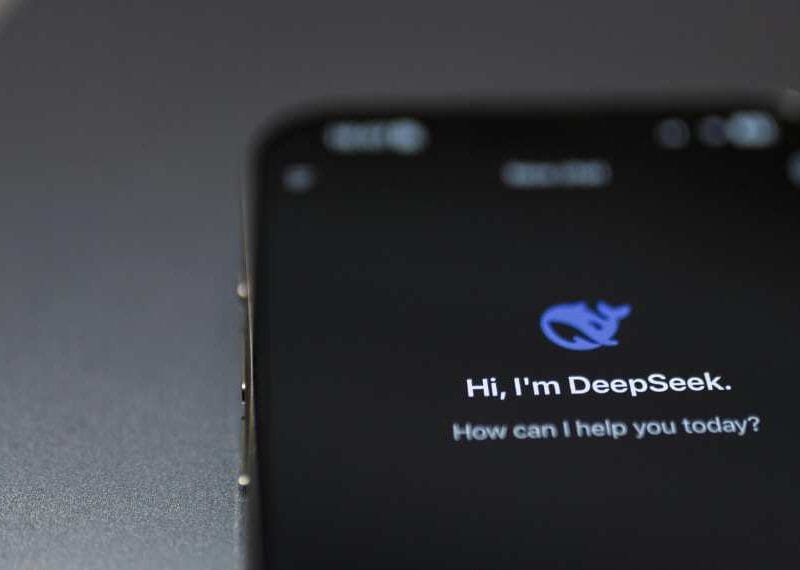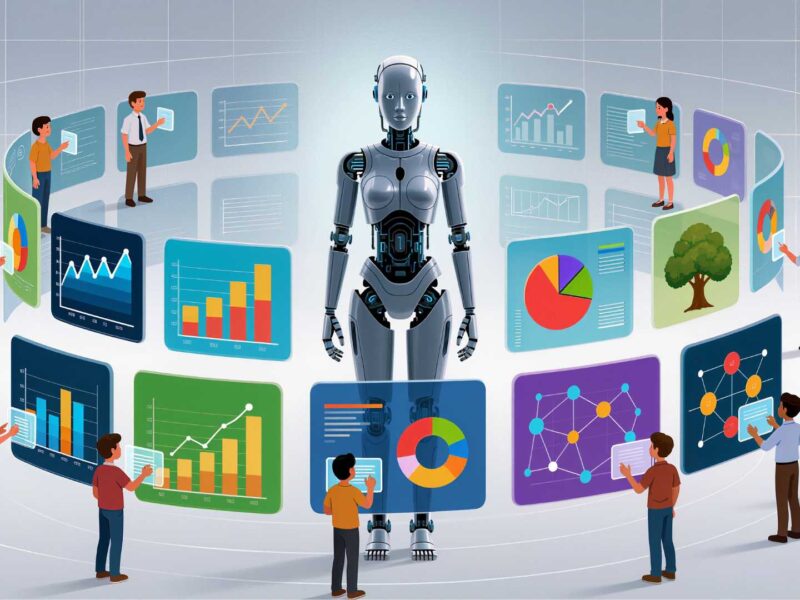Green UX Revolution: Thought Leaders on Real-Time Sustainability Design
Commercial design merges artistry with strategic thinking, requiring business-savvy creativity and adaptability in a tech-driven world.
Success depends on mastering core skills beyond tools, emphasizing problem-solving and innovation.
Our Techronicler article gathers insights from business leaders, thought leaders, and tech experts, providing essential guidance for aspiring designers.
Learn how to build a thriving career by focusing on foundational principles like color, layout, and typography, while embracing emerging technologies such as AI.
Discover strategies to align designs with business goals, communicate effectively, and stay curious.
This roadmap equips designers to navigate challenges and create impactful, sustainable careers in commercial design.
Read on!
Designers Transform Sustainability from Checkbox to Conversation
UX designers have a powerful opportunity—and responsibility—to turn sustainability from a marketing checkbox into a real-time, trust-building interaction.
Instead of just displaying static badges or vague claims like “eco-friendly” or “carbon neutral,” designers can embed radical transparency directly into the interface in ways that are both visual and verifiable.
One strategy is to design live, contextual sustainability data into the user flow. For example, when a user selects a product, instead of showing a generic “sustainable materials” label, the interface could show the actual breakdown: “Made with 72% recycled cotton, sourced from [location], audited by [certifying body], last updated [date].” Even better, let users toggle to see carbon footprint comparisons, water usage, or supply chain steps for that specific item—backed by third-party integrations or blockchain-verified data sources.
Another compelling approach is giving users agency in the impact. Let them choose slower, lower-emission shipping methods with real-time environmental impact comparisons. Or, post-purchase, show their cumulative sustainability contributions—like emissions saved or ethical brands supported—over time. That reinforces behavior and builds a transparent brand-user relationship.
Ultimately, radical transparency in UX comes down to treating users like informed stakeholders, not just buyers.
When you design for accountability, not just aesthetics, you move sustainability from a claim to a conversation—and that’s where real trust is built.

Patric Edwards
Founder & Principal Software Architect, Cirrus Bridge
Tech Creates Transparent Window into Sustainability Claims
As the CEO of a global outsourcing and technology solutions provider, I’ve seen firsthand how crucial it is for businesses to not only talk about sustainability but also prove their commitment.
From our perspective, the key lies in leveraging technology to build trust through radical transparency.
UX designers can move beyond simply displaying claims by integrating real-time data feeds directly into the user interface.
Imagine a retail app where a customer can trace the entire journey of a product—from the raw materials sourced, to the energy used in manufacturing, to the carbon footprint of its delivery—all with a simple tap.
This isn’t just about a static “sustainable” badge; it’s about providing a live, verifiable audit trail.
The user experience becomes a digital window into the company’s supply chain and operational practices. This approach transforms sustainability from a marketing claim into a tangible, provable reality, building a deeper, more meaningful connection with consumers who are increasingly looking for authenticity and accountability from the brands they support.
Real-Time Data Makes Sustainability Claims Tangible
UX designers can create interfaces that prove sustainability claims by integrating real-time data tracking and transparent reporting features.
For instance, I worked on a project for an eco-friendly brand where we displayed the carbon footprint reduction in real-time as users engaged with sustainable products. The interface showed real-time statistics on how each purchase contributed to carbon offsetting, along with visual progress bars reflecting the brand’s overall sustainability goals.
I focused on simplicity, ensuring users could easily access detailed breakdowns of how products were sourced, produced, and shipped, enhancing trust.
The key to this approach was not just showing sustainability claims but making them interactive and tangible for users. By embedding these real-time metrics into the interface, we allowed users to track their impact, creating a deeper connection with the brand’s sustainability efforts.
This radically transparent approach made the brand’s eco-credentials more credible and engaging.

Nikita Sherbina
Co-Founder & CEO, AIScreen
Proving Sustainability With Real-Time Data
I think for software to really drive sustainability, the design needs to move past just nice labels or green badges.
People need to see real, trustworthy data about the impact of what they’re doing or buying right there in the app. That means pulling in live information from APIs, IoT devices, or supply chain feeds, and making sure it’s processed and shown instantly.
The tricky part is balancing speed, accuracy, and usability so users actually trust and understand what they see.
For example, imagine checking out on an e-commerce site and instantly seeing the verified carbon footprint of your order, with suggestions for lower-impact options. That’s powerful. It turns sustainability from a vague idea into something concrete and actionable.
When the tech behind it is solid, like fast backend processing, secure data validation, and clear UI, you give people the confidence to make better choices in the moment.

Hiren Dhaduk
Chief Technology Officer, Simform
Transparency With Verifiable, Live Data
At NRFI, an MLB betting analytics SaaS, we’ve learned that transparency isn’t just about showing a claim — it’s about letting users verify it themselves in real time.
For example, instead of saying “Our model is 65% accurate,” we display a live-updating win/loss record and allow users to filter by date range, bet type, or even specific teams. This builds trust because the proof is built into the interface, not buried in a report.
UX designers can apply this by integrating verifiable data feeds, interactive visualizations, and plain-language explanations directly alongside claims.
When users can see how a metric is calculated and watch it update live, the brand moves from “making a claim” to “demonstrating proof,” which is the essence of radical transparency.

Pierce Kingston
Founder, NRFI
Real-Time Data Creates Verifiable Sustainability Experiences
We, as UX designers can take it a step further and not only showcase sustainability claims, but provide live data and interactive feedback to demonstrate sustainability claims.
One way to do this creatively is through dynamic interfaces which allow users to see the immediate effects of their behavior in real-time. If an e-commerce site, for example, includes a sustainability score for products (with immediate, live updates as to how each purchase affects the user’s environmental footprint – through carbon reduction, recycling potential, sustainable sourcing, etc.), it could also implement interactive dashboards highlighting the user’s personal effect over time, helping the user see and feel achievable impact.
By implementing radical transparency (like showing the data around a product’s entire supply chain or the ability to measure live energy consumption) users will receive a trustworthy data experience which reinforces evidence of sustainability and preserves their agency.
This ultimately positions users as ambassadors, entrusting them to make reasonable decisions in everyday life, while still investing in a meaningful connection with the brand’s values.

Sergio Oliveira
Chief Technology Officer, Designrush
Radical Transparency Builds Verifiable Sustainability Experiences
Radical transparency in UX means turning passive sustainability claims into active, verifiable experiences.
Designers can move the needle by integrating live data visualizations—think carbon offsets, sourcing maps, or real-time energy usage directly tied to user actions.
It’s not just about trust, it’s about agency.
When users see the impact of their choices and the company’s operations, the experience becomes participatory.
UX should highlight not only the ‘what’ of sustainability, but the ‘how’ and ‘now’—bridging brand promises with proof. This isn’t just good design; it’s good ethics.
Sustainability can’t just live in some marketing tab. If we want users to trust a brand, the UX has to show receipts—live data, visible impact, the real deal – in real time! Think: dashboards that track eco-impact, sourcing transparency baked into product pages, or even little nudges like ‘your choice saved X gallons of water.’
When people can see the effect of their actions—or a company’s choices—in real time, it creates trust.
It’s not about perfection, it’s about showing your work. Radical transparency doesn’t need to be flashy, just honest and integrated into the experience.

Alessandro Fard
CEO & Founder, Create Ape
Juan Montenegro
In order to establish veritable trust, UX must provide the users with immediate visibility to what is going on behind the product be it data processing, impact metrics, or even decision making logic. The promises are not what people want, but clarity is. And the more naturally that information fits into the user journey, the more the connection.
It is not a matter of bombarding people with information, it is a matter of designing with integrity. Users get to feel transparency when it is embedded in the product. And when they experience it, they believe it.
That is what makes transparency not only a design choice but also a competitive advantage.

Juan Montenegro
Founder – Wallet Finder
UX for Sustainable, Verifiable User Experiences
UX designers can create interfaces that move beyond displaying sustainability claims by integrating real-time data and interactive elements that verify and demonstrate these claims transparently.
This can include live tracking of supply chains, carbon footprints, or energy usage visible within the interface, allowing users to see the actual impact of products or services as they interact with them.
Designers should employ visual storytelling techniques such as dynamic infographics, dashboards, or augmented reality to make complex sustainability data accessible and engaging.
Embedding third-party verification badges or blockchain-based authenticity proofs can further enhance trust. By prioritizing radical transparency, showing both positives and areas for improvement, interfaces foster informed decision-making and accountability.
This approach transforms sustainability from a static promise into a living, verifiable experience that empowers users to actively participate in and monitor eco-friendly practices, making sustainability an integral, trustworthy part of the user journey.

Rhythm Jagota
Software Developer, Brav
On behalf of the Techronicler community of readers, we thank these leaders and experts for taking the time to share valuable insights that stem from years of experience and in-depth expertise in their respective niches.
If you wish to showcase your experience and expertise, participate in industry-leading discussions, and add visibility and impact to your personal brand and business, get in touch with the Techronicler team to feature in our fast-growing publication.












